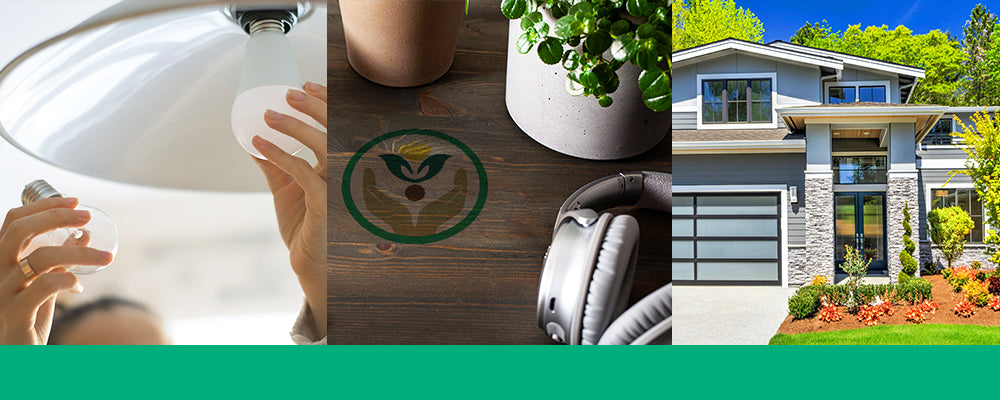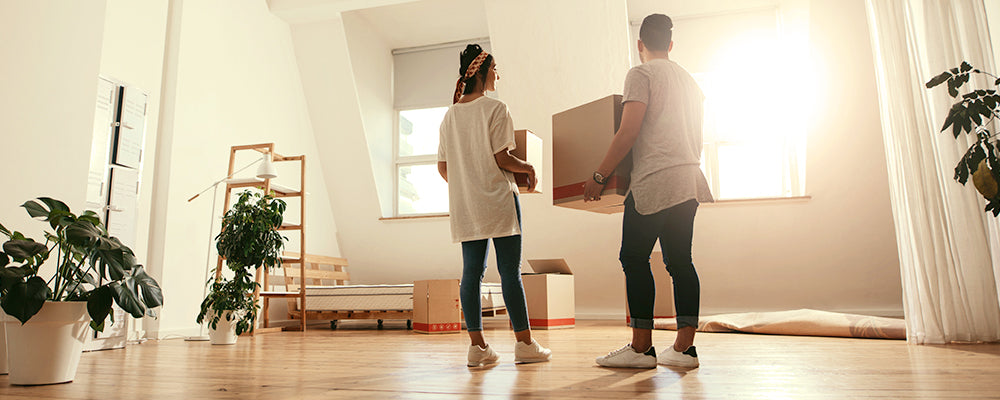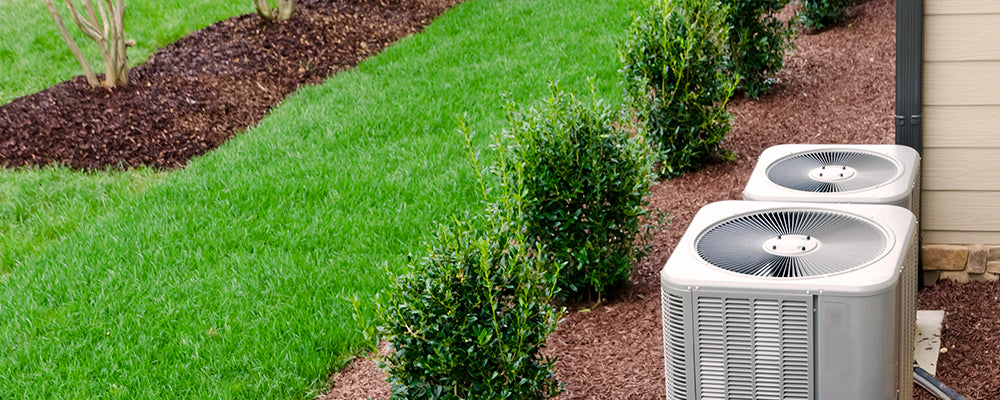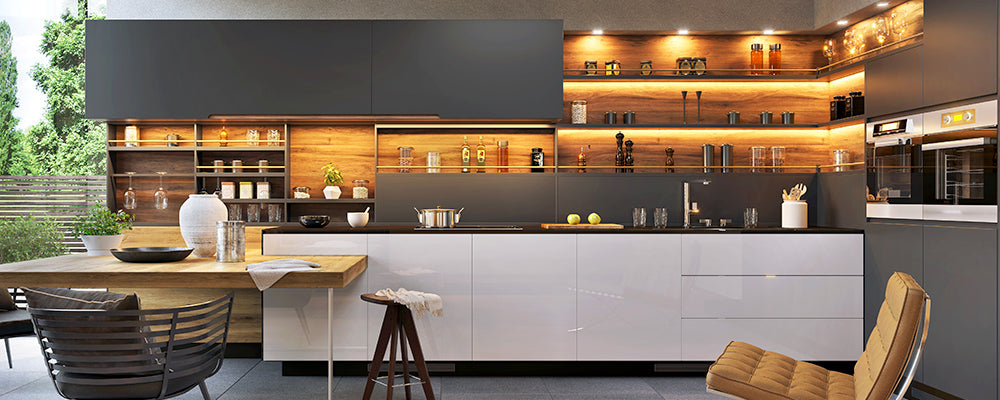Podcast: Being Green on the Inside Out!
Posted by Brent & Becky's Admin on


Last year on Tete-a Tete, we spoke to home builder and efficiency experts Dan and Elizabeth Guinn of Dan Guinn Homes. We chatted about the small and big things in our homes that make a huge impact on the environment, and the different ways homeowners can save on their energy bills while saving the planet. You can jump through to read the interview questions below, or listen to the full podcast by hitting the ‘play’ button!
Jump to a Question:
- How do you make homes more efficient?
- How do you test someone's house for efficiency?
- What is the best time of the year to get an efficiency audit done?
- What makes a home EarthCraft certified?
- What should you plant around an A/C unit?
- Why does the direction of your yard matter when planting around an A/C unit?
- What should you consider before planting anything around an A/C unit?
- What kinds of trees are best for shade?
- What are some ways the average person can make their home more efficient?
- How can you find LED lights that are the same brightness as your incandescent or fluorescent lights?
- Do LED lights work with my standard dimmer switch?
- How does your HVAC system affect home efficiency?
- Should you replace the seals under your door?
Jay: We have Elizabeth and Dan Guinn from Dan Guinn Homes here in Gloucester. You guys just don't build homes. You guys make them more efficient. Give us a little bit of a description of what you guys do with your business.
Elizabeth Guinn: One side of our business is that people call us when they are having issues, either comfort issues, or they've had a really high energy bill. This past winter has been an excellent winter for very high energy bills. They call us and ask us to come in and test their house and we do energy audits on people's houses to help them figure out how to lower those energy bills.
Jay: I've been the recipient of one of those tests. I thought that I had a pretty efficient house except for a few choice areas that I already knew about, but when you guys came in, boy, you guys are sensitive enough with the equipment that you have and experience that you have that you found little things, even just through some of the numbers that you were reading on your equipment that I never would have even thought about or felt as a person. Your equipment is very sensitive. How does this whole process work when you come and test someone's house for efficiency?
Elizabeth Guinn: We put a blower door on the house and we draw the air out of the house that creates a negative pressure inside the house. What that does is accentuates all the very small leaks. You would think a small leak is not a bad thing, but small leaks add up to big leaks. They all combine together and create an uncomfortable or an inefficient atmosphere inside your house. We use these very sensitive manometers to go around while the blower door is going to root out all the sources of the small leaks. It could be a little piece of baseboard. It could be around some window trim. I think in your house we found some in your basement.
Jay: Yes you did. Yeah, where the brick foundation of the basement met the wood that went from there up.
Elizabeth Guinn: It was unsealed.
Jay: Yeah. It was not sealed. You would think that there is a pretty good seal. With all that pressure of the entire house pressing right there, that you would think, well, that's pretty good, but no, there was some air coming through there.
Elizabeth Guinn: You might think that putting a blower door and creating negative pressure is kind of an unnatural state, and why would you want to do that, your house isn't like that normally, but every time you turn on your vent fan over your kitchen, cook stove, every time you turn on your bathroom fan, every time you run your dryer in your house, you are doing exactly that. You are creating negative pressure and you are accentuating all of those leaks in your house every day. Worst case scenario is you turn them all on at the same time and you've got a pretty big draw.
Jay: Yeah. I can imagine people probably do all of them at the same time. I never thought about the dryer as, I guess the dryer is drawing air in and then blowing it out in the back.
Dan Guinn: Yeah. That's exactly right. Exhaust it out of the house. That's the thing about the equipment that we use. It helped the home owners and us find the things that are not readily visible to the naked eye. A lot of times we will find things that have gone unnoticed for years and years and years. That's the thing that usually ends up being the biggest, energy savings that you can have, are those things that go unnoticed.
Jay: Now, when would be the best time of the year to get one of these audits done?
Elizabeth Guinn: We have lots of equipment. One of those pieces of equipment is a thermal imager. If you want to use the thermal imager, it has to be a 20 to 30 degree temperature difference from the inside to the outside. So if you would like the visual of seeing the thermal imager, it needs to be a very hot day or a very, very cold day. The times in between the thermal imager is not as useful, but all of our other equipment works great any time of the year, but a good time to get an energy audit is before you are going to do something. If you are thinking about changing out some windows, or you are thinking about adding onto your house, then that's the time to stop and say, you know let me assess my situation where I am and what I have and what I need to do to make what I already have better before I spend money fixing something else.

Jay: My house, I wouldn't call it very old. It is 10, 12 years old, something like that. So not an old house, but we found some areas that needed to be fixed. Does this best work for older homes or like Brent and Becky over there who just moved into a new one.
Brent: Dan and Elizabeth came and did a test on our house before we had got the occupancy permit because I think there may be a requirement for new houses now, but boy, I think ours rated really well, didn't it, Dan?
Dan Guinn: It did. It performs really well. The fact of the matter is new or old houses, what we can do is identify areas that can improve your energy efficiency. So it's really not tied to older houses or newer houses, brand new houses. The codes are requiring duct testing, which was one of the tests that we have performed at Brent’s house. And it did perform really well.
Jay: Speaking of new homes, you guys have just moved into one; an EarthCraft certified house that you built. What makes it EarthCraft certified?
Elizabeth Guinn: Dan is a technical advisor for EarthCraft. So if you wanted to build EarthCraft, he would be the one that you would call to come certify your house, but he can't certify his own house. We have a friend of ours that's also an earth craft technical adviser out of Williamsburg that's certifying our house. What that means is EarthCraft is a Virginia corporation that has set up some guidelines on how to build things, houses that function more efficiently. They are really focused on the actual functionality of the house. So we went through, built our house, knowing all these things that EarthCraft requires. We built everything to their specifications. Our friend from Williamsburg came in and certified that we had done that. Our house, a house scale, an earth scale is from zero to a hundred. The average house scores about a hundred. Our house is coming in at about a 40 on the earth scale. That means that our house performs about 60% more efficiently than the average house.
Jay: Holy cow! That's pretty significant.
Dan Guinn: Yeah, and the great thing about EarthCraft is it's a third party verification program, meaning that it's an extra set of eyes looking at a project and making recommendations based on their program, which is excellent. It has a whole slew of ways that you can achieve your energy efficiency goal.
Jay: We've got some questions about ways to get their house more energy efficient. The first one is from Kathy in Gloucester.

Kathy: My name is Kathy and I'm from Gloucester, Virginia. I have a question about what plants that I can plant in front of my air conditioning unit that won't be damaged by the air that's released from the unit and also something that will help disguise it in a mainly shady, but a little bit of sun area of my yard. Thank you so much. Bye-bye.
Jay: That's a great question, Brent. What sort of plant would you recommend around an air conditioning unit?
Brent: I would recommend some sort of evergreen plant, but not all evergreen plants are created equal. Some do better on the warmer exposures, like you probably want some sort of conifer that's used to hot and dry if your unit is on the south side of your house. However, you probably want a broadleaf evergreen, if it's on the north side of the house. So one, perhaps it's in more shade during most of the day and doesn't get quite as hot.
Jay: Why the difference in leaves based on north and south?
Brent: Well, typically, the conifers, the evergreen conifers are more resistant to hot and dry, whereas the broadleaf evergreens like camellias, boxwoods, things like that evolved in a situation where they perhaps have a little more shade and their leaves are a little cooler, whereas in the hot dry, they would tend to desiccate more quickly. So you pick a plant for the right place. Again, the conifers are better suited for the hot and dry, the south and the west, the broadleaf evergreen is better for the north and the east locations.
Jay: Dan, Elizabeth, you guys can probably help with the specs of once they've chosen the plant, where should it go and what should they be careful of?
Dan Guinn: You just want to be careful about getting the plants too close to the unit. The unit needs to have plenty of air flow around it. If you restrict the airflow, it's going to cause it to work harder to produce that heat in the winter or the cool in the summer. Also, I would consider placing it so that it would shade the unit in the summertime. That will help the unit to disperse the heat if it's not being overheated from the sunlight.
Jay: We have a very similar question from Dennis in Lutherville, Maryland who wants to know what sort of trees to plant around a house to offer shade in the summer, but sunlight through in the winter time to keep the house warmer through the windows, but in the summer block the sun. So what sort of trees would be best to offer some shade and protection when needed?
Brent: Shade and protection, again on the south and the perhaps east and west sides would be broad-leafed trees that are deciduous. They do lose their leaves in the winter, so you do allow in the sunlight. On the north side, however, not so important, so the evergreens can go there. They actually block more of the winter winds and buffer the house from the effects of cold. Deciduous trees on the south and the east and perhaps west, but more on the north, evergreens.
Jay: Okay. Dan, I guess, kind of a similar answer as the previous one.
Dan Guinn: Yeah. You don't want to put those trees too close to the house because you still need air movement to dry the house out. So that's a consideration just to make sure that it's not too close to the siding and to keep the root system out of the foundation as well, which can lead to moisture issues underneath the house. I would consider placing the trees so that they casted shade over any large windows because you are always going to lose most of your heating and cooling through the glass.
Jay: The weather guys this morning mentioned that because today's high temperature here, actual temperature is going to be 99 to 100 actual temperature with a real feel into the hell area, pretty hot. They said pull your blinds, because you are going to gain so much heat in the house by having the blinds up. So block that sun out. That's a good tip. Thank you. We have another question from Virginia in Florida.
Virginia: This is Virginia from Englewood, Florida, and we've just bought and moved into an older home. I was wondering, what are some of the easy things that we can do to make sure our home is as energy efficient as it can be?
Jay: Good questions; simple things that they can do to get started right away before they even contact you to make sure they are going to get the best score possible.

Elizabeth Guinn: We always start with the lowest hanging fruit and that has got to be lighting. With the new LED light bulbs out, we just saw an ad yesterday from Home Depot that had light bulbs, LED light bulbs that were under $2. So LED light bulbs are coming down. The price is coming way down. The efficiency ratings are going way up and I don't even recommend CFLs anymore. I recommend people go directly to the LEDs. They save even more energy. They are cool. They don't heat up the house while they are on. That is the largest thing you can do to save money, is just to go through your house and change out absolutely everything you have for LED. They are great also for the outside of the house, because unlike the CFLs, they don't take time to warm up and get bright. They are just instant on. So they are wonderful on the outside of the house.
Jay: After you guys had visited, I went out and did just that. And I got some of those CFLs and LEDs. Well, I ended up hating those CFL, so I ended up getting LEDs. So I've spent way too much money, but it was also be aware of color. It's crazy, the color differences that they offer.
Elizabeth Guinn: Yes. You used to go in to buy light bulbs and only be concerned with the wattage, but wattage is the least of your concerns now. When you go in to buy a light bulb, you need to think about the color range, you know, warm, soft to bright white. You also need to think about how many lumens of light it's giving.
Jay: That was tough for me because lumens was a new term and to be able to go all right, well, the light in this room is bright, what does that mean in lumens? How do you make that comparison?
Elizabeth Guinn: I start by picking the old incandescent bulb that you would have bought in the past and read the lumens on that and go from there. I know that when I'm putting in the LEDs, I'm probably not going to replace them for sometimes upwards to 20 to 30 years because they last forever and I'm not getting younger. I need more light as I get older. So I'm going with the brighter, the higher lumen lights, so that because they are going to be there for 30 years as my eyes age, I'm going to have that nice, bright light.
Jay: Do the LEDs work with dimmer switches?
Elizabeth Guinn: They don't work with your standard dimmer switches. They do work with their own LED dimmer switches. You might have to change that out for a new dimmer switch.
Brent: That may be our problem. We are having a problem with a dimmer switch on an LED fixture. It's getting hot and it's clicking and something is wrong. So we maybe need to have a LED switch instead of a regular one.
Dan Guinn: Those older style dimmer switches will also make the LEDs perform funny. It will make them flicker and there will be a lot shorter dimming range on them. Like super, you moved a tiny bit and the light will change a lot. It really affects the performance of the LEDs.
Jay: All right. Other than light bulbs, what is another easy step they can take to get some changes done?
Dan Guinn: Oftentimes we will find that not a lot of attention has been paid to the HVAC equipment. It seems like a small thing to do, but changing your filters out on a regular basis is very, very important to keep those units running at their peak efficiency.
Jay: So you mean not like at my house where I wait until I have a small quilt up in there and then I switch them out.
Elizabeth Guinn: Dan likes to write, actually write the date on the filter when he put it in. And then he watches that and makes sure that he at least changes it every three months. But during the times of the year, like right now, your air conditioning is running pretty much all the time because it's pretty hot, you might want to change them out even more. So Dan, we go around, we actually look at them. As soon as they start to get a little furry, they come out, we put new ones in. Keep a large supply handy so it's very easy. Just pull one out of the closet, put it in.
Jay: One of the things that I found at my house was that the seals under the doors were not of the greatest quality and there was some rubbing and they were beginning to break. That's where I could feel air coming through. How easy is that to change out?
Dan Guinn: Whether it’s stripping or outdoors is actually relatively simple to change. Most of the big box hardware stores have kits now that you can buy. They are just exactly the same as the original equipment. A putty knife, in 5/10 minutes, you can have those pieces changed out.
Jay: That's great. Thank you very much, Dan and Elizabeth Guinn for joining us. If people want to reach you and get in touch with you, phone numbers, websites, firstborn, blood type, how do they reach you?
Dan Guinn: I can be reached on my cell phone at (757) 438-8624. That's usually the best way.
Elizabeth Guinn: Or you can find us online at Danguinnhomes.com. It is GUINN, so Danguinnhomes.com.
Jay: Thank you very much for joining us today? We really enjoyed having you.
Dan Guinn: Thank you for allowing us to come out during your podcast.
Jay: I enjoyed it. Thank you, Brent, for your time as well.
Brent: Come see Becky's garden, by the way. It is spectacular. Lots and lots of Lilies and Dahlias coming into bloom right now. And the Eucomis, the Pineapple Lilies are something else.
Jay: Hey, what a good time. That was fantastic. We learned so much about not just living green outside, but being green on the inside as well. Lots of great information given today. Thank you so much for listening to Tete-a Tete.
Share this post
- Tags: Brent and Becky's, brent and becky's blog, design, energy efficiency, environmentally friendly, fluorescent light, garden, gardening, gardening tips, green, home design, incandescent light, landscape design, lighting, lights, outdoor lighting



